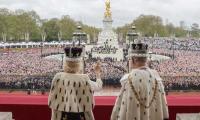ISLAMABAD: In its judgement on the video tape, involving suspended accountability court Judge Arshad Malik, the Supreme Court cited a number of case law in which an audio or video was either discussed or admitted in evidence subject to fulfillment of certain conditions.
The three-member bench’s ruling authored by Chief Justice Asif Saeed Khosa referred to at least 17 case law in this connection.
There were five judgements in which the admissibility of an audio tape or video in evidence before a court of law and the mode and manner of proving the same have been discussed in Pakistan and abroad. It, advantageously, recorded a summary of the case law chronologically.
Some 12 reported cases were referred to in the ruling in which a video recording or footage was held to be admissible in evidence upon fulfillment of some conditions.
According to the decision, the precedent cases showed that in the matter of proving an audio tape or video before a court of law, some 21 requirements are insisted upon.
One of them is that the person recording an audio tape or video may be a person whose part of routine duties is recording of an audio tape or video and he should not be a person who has recorded the audio tape or video for the purpose of laying a trap to procure evidence.
Another requirement is that no audio tape or video can be relied upon by a court until the same is proved to be genuine and not tampered with or doctored. A forensic report prepared by an analyst of the Punjab Forensic Science Agency, in respect of an audio tape or video is per se admissible in evidence in view of the provisions of Section 9(3) of the Punjab Forensic Science Agency Act, 2007.
Under Article 164 of the Qanun-e-Shahadat Order, 1984, it lies in the discretion of a court to allow any evidence becoming available through an audio tape or video to be produced.
Yet another requirement is that even where a court allows an audio tape or video to be produced in evidence such audio tape or video has to be proved in accordance with the law of evidence. Accuracy of the recording must be proved and satisfactory evidence, direct or circumstantial, has to be produced so as to rule out any possibility of tampering with the record.
An audio tape or video sought to be produced in evidence must be the actual record of the conversation as and when it was made or of the event as and when it took place. The person recording the conversation or event has to be produced.
Another requirement is that the person recording the conversation or event must produce the audio tape or video himself. The audio tape or video must be played in the court. An audio tape or video produced before a court as evidence ought to be clearly audible or viewable. The person recording the conversation or event must identify the voice of the person speaking or the person seen or the voice or person seen may be identified by any other person who recognizes such voice or person.
Any other person present at the time of making of the conversation or taking place of the event may also testify in support of the conversation heard in the audio tape or the event shown in the video. The voices recorded or the persons shown must be properly identified.
The evidence sought to be produced through an audio tape or video has to be relevant to the controversy and otherwise admissible. Safe custody of the audio tape or video after its preparation till production before the court must be proved. The transcript of the audio tape or video must have been prepared under independent supervision and control.
Yet another requirement is that the source of an audio tape or video becoming available has to be disclosed. The date of acquiring the audio tape or video by the person producing it before the court ought to be disclosed by such person.
An audio tape or video produced at a late stage of a judicial proceeding may be looked at with suspicion. A formal application has to be filed before the court by the person desiring an audio tape or video to be brought on the record of the case as evidence.
PTI maintain leading position in NA elections, with narrow lead of one percentage point over PMLN
Nationalists say province's resources, land, and water were being sold under guise of development







